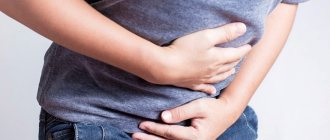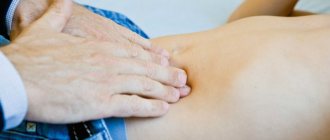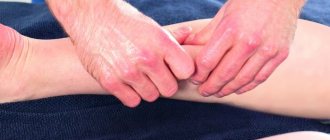Pelvic pain is pain that is localized below the navel and above the beginning of the thighs. They can be associated with different conditions. Sometimes pelvic pain does not pose any danger and goes away on its own after some time, sometimes it indicates certain diseases, and in some cases it signals that you need to urgently go to the hospital.
Sexually transmitted infections
Characteristic signs of sexually transmitted infections (STIs): pain during urination, vaginal discharge, vaginal bleeding between periods. The most common types of STIs are gonorrhea and chlamydia. The final diagnosis can be made by a doctor after laboratory tests. If you are diagnosed with a sexually transmitted disease, your partner should also be tested.
Symptoms of pain in the perineum
The clinical picture that complements pain in the perineum in women and men may be different, since it depends on the pathology that caused it. This means that symptoms vary. The most common ones are:
- Discharge from the urethra or vagina;
- Radiating pain to the pelvis, lumbar region and lower abdomen;
- Increased pain during physical activity;
- Frequent urge to urinate;
- Pus and blood in urine and semen;
- Increased pain during sexual intercourse;
- Sensation of a foreign object in the rectum;
- Increased body temperature.
Clinical manifestations characteristic of a particular disease are presented in our table below:
| Diseases | Additional symptoms |
| Prostatitis |
|
| Perineal injuries |
|
| Malignant prostate tumors |
|
| Inflammatory processes of the vagina |
|
Ovarian cyst
The ovaries contain follicles - sacs in which eggs mature. A mature follicle ruptures during ovulation and releases an egg. If this does not happen, it turns into a cyst. Such ovarian cysts are usually harmless and can go away on their own, but they can cause pain and an enlarged abdomen. When the cyst is torsioned, a threatening condition occurs - severe acute pain should force you to immediately consult a doctor. Ovarian cysts are detected during a gynecological examination and ultrasound.
Classification of pain in the perineum
The identification of different groups, categories or classes of pain symptoms occurring in the groin is based on various parameters. All of them are presented in our table below.
| Type of pain | Distinctive features |
| Classification based on predisposing factor | |
| Primary | Develops as a result of a perineal injury or due to a neurological disorder. |
| Secondary | Pain radiating to the perineum due to existing diseases of the internal organs. |
| Classification by origin | |
| Visceral | It occurs due to compression or irritation of the nerves located in the organs of the genitourinary system. |
| Neurogenic | Occurs due to damage to nerve tissue in the perineal area. |
| Psychogenic | It occurs as a result of disturbances in the patient’s psycho-emotional state due to stress, depression, and neuroses. |
| Classification by duration of manifestation | |
| Acute | It appears brightly and lasts for a short time: from a couple of minutes to several hours, but not more than 24 hours. |
| Chronic | It is mild and lasts for a long time: several months. |
| Classification by nature of manifestation | |
| Pulling | Such painful symptoms are characterized by duration and often intensify in a sitting position or during defecation. It is typical for the postpartum period and occurs due to swelling and sprains, and also develops with the following diseases:
|
| Sharp, sharp | It is typical for any perineal injuries, ranging from ordinary bruises to muscle ruptures. It is very intense and can even cause loss of consciousness. It may also occur with diseases such as:
|
| Bursting | Most often it occurs in women before childbirth, when the body is preparing for this process, as well as during inflammatory processes of the vaginal mucosa. |
Pelvic organ prolapse
With age or during pregnancy and childbirth, the pelvic floor muscles may weaken, causing the uterus, vagina and bladder to move downwards. This is not a dangerous condition, but it leads to a feeling of discomfort and makes sexual intercourse painful. Special Kegel exercises help strengthen the pelvic floor muscles.
Varicose veins of the pelvic veins
Varicose veins can occur not only on the legs. Dilatation of the pelvic veins leads to pain, which intensifies when the woman sits or stands. When lying down, symptoms decrease or disappear. Varicose veins of the pelvic veins are treated surgically.
Pain in the perineum in pregnant women
Patients often come to the gynecological department of our clinic with the question of why the perineum hurts during pregnancy and how dangerous it is. Normally, such symptoms are associated with the growth of the fetus and its descent. It is typical for the 3rd trimester - it is during this period, due to the development of the child, that there is an impact on the ligaments, nerves and muscles of the mother’s body, which are stretched. However, the occurrence of such symptoms in the early stages may be a sign that there is a high risk of miscarriage.
It is not uncommon for the fetus to put pressure on the nerve that runs nearby. The pain that occurs in this case limits movement and does not stop until the fetus changes position. Modern medicine cannot help in this case.
Perineum hurts before childbirth
Severe pain symptoms that occur over a long period of time are a sign that labor is approaching. It is caused by the expansion of the pelvic bones and other processes of preparation for the process, along with the approach of the fetus to the birth canal.
Perineum hurts after childbirth
Painful symptoms are felt by almost all women afterward, although its strength may vary. It depends on the presence/absence of injuries during childbirth. So, it goes away 3-4 days after birth when it occurs due to swelling and stretching of tissues, and persists much longer with ruptures of the perineum and sutures.
Myofascial pain syndrome (MPS)
Quite often, the source of pelvic pain is the muscles and ligaments. This condition is called myofascial pain syndrome and has the following causes:
- muscle and ligament sprains;
- bruises;
- frequent minor muscle injuries, for example, during heavy physical work or sports;
- overstrain of the pelvic muscles, when you have to maintain an uncomfortable position for a long time;
- Sometimes the cause is hypothermia and frequent stress.
There can be many causes of pelvic pain. Sometimes it is difficult for a doctor to determine the cause of this condition without additional examinations. If you are worried about pelvic pain, make an appointment with a gynecologist at ProfMedLab, our phone number: +7 (495) 120-08-07.
Need more interesting articles:
13 reasons to get tested for hormones 02/08/2017
Working night shifts increases the risk of developing breast cancer 07/08/2019
Why is it good to cry? 05/19/2017
Our doctors
Kochetov Sergey Anatolievich
Urologist, Candidate of Medical Sciences, doctor of the highest category
34 years of experience
Make an appointment
Mukhin Vitaly Borisovich
Urologist, Head of the Department of Urology, Candidate of Medical Sciences
34 years of experience
Make an appointment
Perepechay Dmitry Leonidovich
Urologist, Candidate of Medical Sciences, doctor of the highest category
40 years of experience
Make an appointment
Khromov Danil Vladimirovich
Urologist, Candidate of Medical Sciences, doctor of the highest category
35 years of experience
Make an appointment
What diagnostics are performed for pain in the perineum?
Often, when pain symptoms occur in the perineum, the patient does not know which doctor he needs to see. First of all, you should make an appointment with a therapist who, depending on the situation, will give a referral to a urologist, gynecologist, proctologist or surgeon. Diagnostic methods in all cases are specific, the main ones are the following:
- interviewing the patient to determine the nature of the pain and the presence of additional symptoms;
- physical examination by a gynecologist or urologist;
- careful history taking;
- general and biochemical blood test;
- general urine analysis;
- bacterioscopy in women, urethral flora smear in men;
- radiography;
- ultrasonography;
- intestinal colonoscopy;
- examination of the rectal mucosa;
- computed and magnetic resonance imaging;
- X-ray of the colon of the bladder with the introduction of a contrast agent into it.
Complications.
Because sexual intercourse is intensely painful, vulvodynia can cause associated emotional problems. For example, fear of sexual intercourse can cause spasm of the vaginal muscles (vaginismus).
Other known complications may include:
- anxiety,
- depression,
- sleep disturbance,
- sexual dysfunction,
- individual psychological problems and difficulties in relationships with a partner,
- decreased quality of life.
Lifestyle and home remedies.
The following tips may help you manage the symptoms of vulvodynia:
*Use of cold compresses. Place them directly on the outer genital area to relieve pain and itching.
* Taking a sitz bath. Two to three times a day, sit in comfortable, warm (not hot) or cool water with Epsom salts (magnesium sulfate, at the rate of 0.5 - 1 kg per bath) or oatmeal infusion for 5 -10 minutes.
* Avoid tight tights and synthetic underwear. Tight clothing restricts air flow to the genital area, which often leads to increased temperature and humidity and can cause irritation. Wear white cotton underwear to increase ventilation and dryness. Try sleeping without underwear at night.
* Avoid hot baths. Prolonged exposure to hot water can cause discomfort and itching.
*Do not use deodorized tampons or pads. Deodorant can be irritating. If pads cause irritation, replace them with natural cotton gauze pads.
* Avoid activities that put mechanical pressure on your vulva, such as cycling or horseback riding.
* Wash yourself carefully. Over-cleaning the affected area or washing it too often can increase irritation. Use plain water, wash your vulva with your hand, and pat dry. After bathing, apply a preservative-free emollient such as Vaseline to create a protective barrier.
* Use lubricants (lubricant). If you are sexually active, apply lubricant before sex. Do not use lubricants containing alcohol, fragrances, or heating or cooling agents. Choose condoms whose lubricant does not irritate your mucous membranes and use only them.








